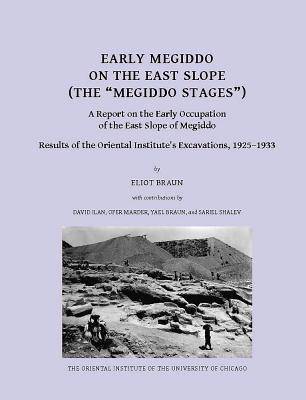
- Afhalen na 1 uur in een winkel met voorraad
- Gratis thuislevering in België vanaf € 30
- Ruim aanbod met 7 miljoen producten
- Afhalen na 1 uur in een winkel met voorraad
- Gratis thuislevering in België vanaf € 30
- Ruim aanbod met 7 miljoen producten
Zoeken
Early Megiddo on the East Slope (the 'Megiddo Stages')
A Report on the Early Occupation of the East Slope of Megiddo. Result of the Oriental Institute's Excavations, 1925-1933
Eliot Braun, David Ilan, Ofer Marder, Yael Braun, Sariel Shalev
€ 89,45
+ 178 punten
Omschrijving
This report completes prior publications by Clarence S. Fisher (1929), P. L. O. Guy (1931), Robert M. Engberg and Geoffrey M. Shipton (1934a), and P. L. O. Guy and Robert M. Engberg (1938) on the earliest utilization and occupation of the slope at the southeast base of the high mound of Megiddo (Tell el-Mutesellim). That area, labeled by the excavators the "East Slope," and identified by them in their notations as "ES," was excavated by the Oriental Institute between the years 1925, when work commenced, and 1933, when the last of it was apparently cleared down to bedrock. While the primary focus of this report is on Square U16 (an area of 25 25 m), where most of the early remains (i.e., of the Early Bronze Age and earlier) excluding tombs were encountered, this work also deals with the later remains within that same, limited precinct.
Specificaties
Betrokkenen
- Auteur(s):
- Uitgeverij:
Inhoud
- Aantal bladzijden:
- 156
- Taal:
- Engels
- Reeks:
Eigenschappen
- Productcode (EAN):
- 9781885923981
- Verschijningsdatum:
- 28/02/2014
- Uitvoering:
- Hardcover
- Formaat:
- Genaaid
- Afmetingen:
- 236 mm x 305 mm
- Gewicht:
- 1791 g

Alleen bij Standaard Boekhandel
+ 178 punten op je klantenkaart van Standaard Boekhandel
Beoordelingen
We publiceren alleen reviews die voldoen aan de voorwaarden voor reviews. Bekijk onze voorwaarden voor reviews.











